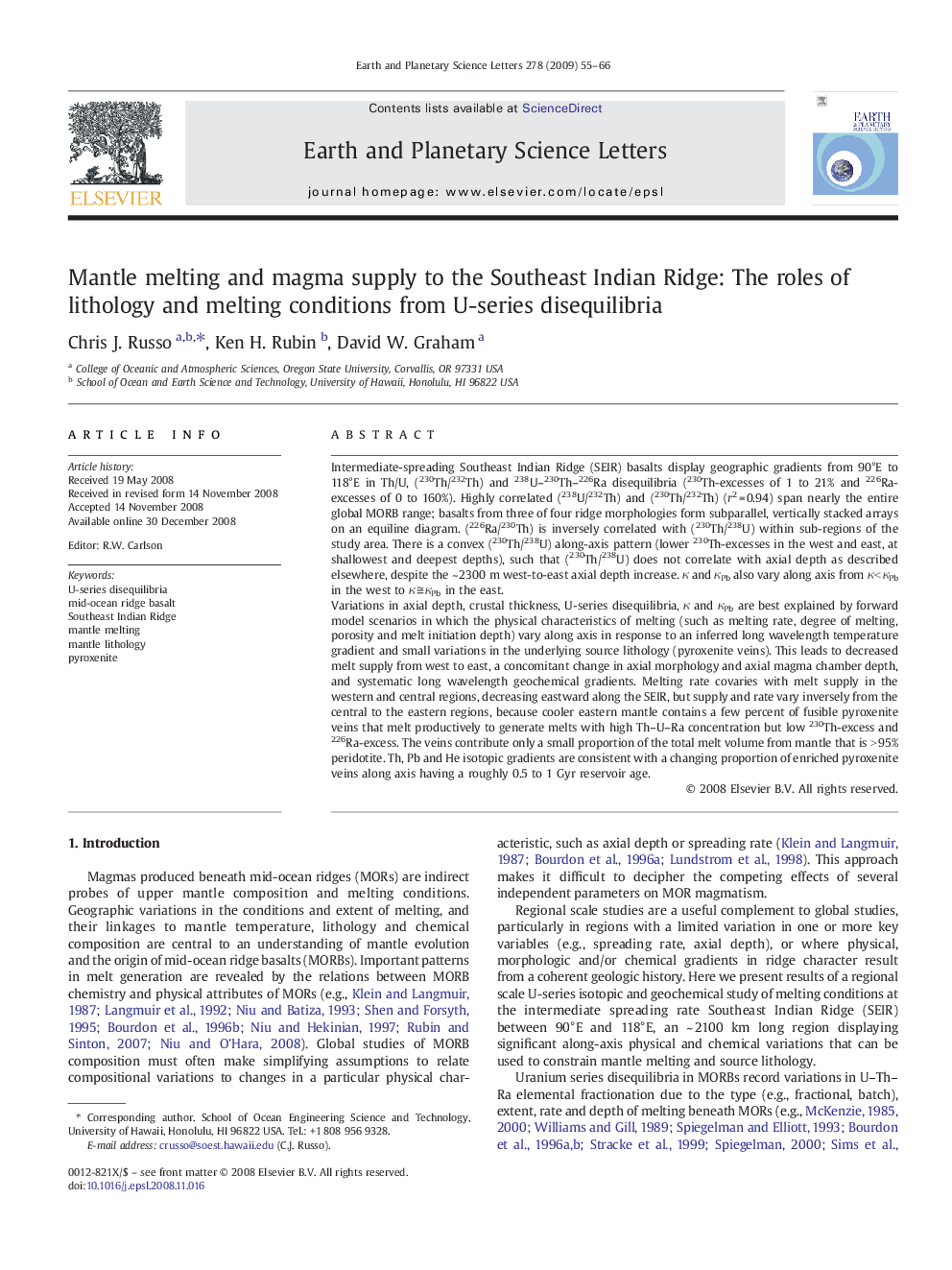| کد مقاله | کد نشریه | سال انتشار | مقاله انگلیسی | نسخه تمام متن |
|---|---|---|---|---|
| 4679303 | 1634880 | 2009 | 12 صفحه PDF | دانلود رایگان |

Intermediate-spreading Southeast Indian Ridge (SEIR) basalts display geographic gradients from 90°E to 118°E in Th/U, (230Th/232Th) and 238U–230Th–226Ra disequilibria (230Th-excesses of 1 to 21% and 226Ra-excesses of 0 to 160%). Highly correlated (238U/232Th) and (230Th/232Th) (r2 = 0.94) span nearly the entire global MORB range; basalts from three of four ridge morphologies form subparallel, vertically stacked arrays on an equiline diagram. (226Ra/230Th) is inversely correlated with (230Th/238U) within sub-regions of the study area. There is a convex (230Th/238U) along-axis pattern (lower 230Th-excesses in the west and east, at shallowest and deepest depths), such that (230Th/238U) does not correlate with axial depth as described elsewhere, despite the ~ 2300 m west-to-east axial depth increase. κ and κPb also vary along axis from κ < κPb in the west to κ ≅ κPb in the east.Variations in axial depth, crustal thickness, U-series disequilibria, κ and κPb are best explained by forward model scenarios in which the physical characteristics of melting (such as melting rate, degree of melting, porosity and melt initiation depth) vary along axis in response to an inferred long wavelength temperature gradient and small variations in the underlying source lithology (pyroxenite veins). This leads to decreased melt supply from west to east, a concomitant change in axial morphology and axial magma chamber depth, and systematic long wavelength geochemical gradients. Melting rate covaries with melt supply in the western and central regions, decreasing eastward along the SEIR, but supply and rate vary inversely from the central to the eastern regions, because cooler eastern mantle contains a few percent of fusible pyroxenite veins that melt productively to generate melts with high Th–U–Ra concentration but low 230Th-excess and 226Ra-excess. The veins contribute only a small proportion of the total melt volume from mantle that is > 95% peridotite. Th, Pb and He isotopic gradients are consistent with a changing proportion of enriched pyroxenite veins along axis having a roughly 0.5 to 1 Gyr reservoir age.
Journal: Earth and Planetary Science Letters - Volume 278, Issues 1–2, 15 February 2009, Pages 55–66